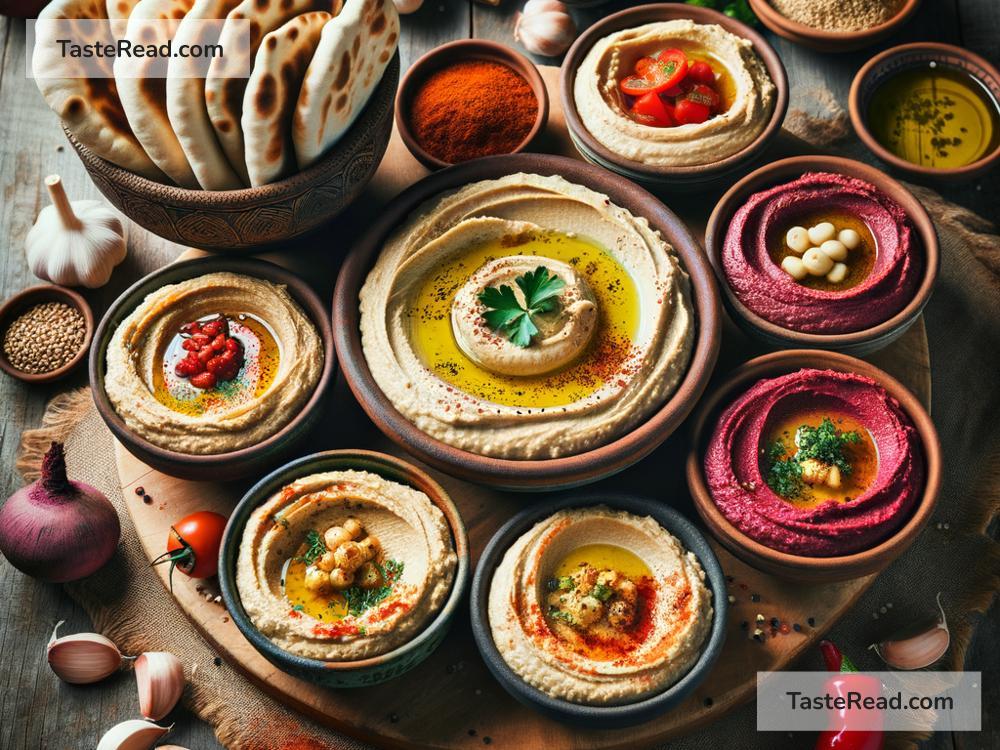The Evolution of Middle Eastern Hummus: A Journey Through Time and Taste
Hummus is one of the most beloved dishes in the world today, but its roots go back thousands of years to the Middle East. This humble yet flavorful dish, made from chickpeas, tahini, lemon juice, garlic, and olive oil, has evolved over time into a culinary staple enjoyed by millions. Let’s take a journey through the history and transformation of hummus, from its origins to becoming a modern-day favorite.
Ancient Beginnings
The story of hummus begins in ancient times, though its exact origin is debated. Many Middle Eastern countries, including Lebanon, Israel, Palestine, Syria, Egypt, and Turkey, claim hummus as their own. What is clear is that chickpeas, the main ingredient in hummus, have been cultivated in the Middle East for over 10,000 years.
Early mentions of chickpea dishes can be found in historical texts from ancient Egypt and the surrounding regions. These texts describe mashed chickpeas mixed with spices, though the dish was likely very different from the creamy hummus we know today. Some historians speculate that similar recipes may have been prepared during the rule of the Egyptian pharaohs, while others trace early versions back to Greece or the Levant.
The Name “Hummus”
The word “hummus” itself comes from Arabic, meaning “chickpea.” Its full name, “hummus bi tahini,” translates to “chickpeas with tahini.” Tahini, a paste made from ground sesame seeds, is considered an essential ingredient that gives hummus its rich and nutty flavor. While there are variations without tahini, the combination of chickpeas and tahini is what makes hummus truly special.
Spread Across Empires
As Middle Eastern empires spread across the region, so did their cuisine and culture. Chickpeas were easy to grow in the warm climate of the Middle East, and they provided a vital source of protein and nutrients. Over time, the dish evolved as people in different areas added their own local ingredients, such as olive oil, lemon juice, garlic, or spices.
During the Ottoman Empire, hummus became a more refined dish, with chefs experimenting with textures and flavor combinations. This was the era when hummus grew in popularity as a common food served at gatherings, celebrations, and feasts. It wasn’t just a source of sustenance—it became a cultural symbol.
A Symbol of Hospitality
One of the reasons hummus holds a special place in the hearts of Middle Eastern people is because it represents hospitality and sharing. Traditionally, hummus is served as part of a mezze platter, an assortment of small dishes shared by groups. Mezze brings people together, encouraging conversation and connection over good food. Serving hummus at home is also considered a warm gesture to guests.
In many Middle Eastern households, no meal is complete without hummus. Whether served with freshly baked pita bread or raw vegetables, hummus is a versatile dish that complements nearly any meal.
Modern Variations
In its most traditional form, hummus is a simple blend of chickpeas, tahini, lemon juice, garlic, and salt. However, as hummus has become more popular worldwide, chefs and home cooks have started experimenting with new versions of the classic recipe.
For example, today you can find hummus flavored with sun-dried tomatoes, roasted red peppers, or spices like paprika and cumin. Avocado hummus, beet hummus, and chocolate hummus are just a few variations that have emerged in recent years. While these creative takes are far from traditional, they’ve helped introduce hummus to new audiences who may not have tried it otherwise.
Even in the Middle East, different regions have their own style of hummus. In Lebanon, hummus is often topped with pine nuts and olive oil, while Palestinians may add sumac or serve it slightly warm. In Turkey, some variations use yogurt to create a creamier texture. These regional twists make hummus a dynamic dish that continues to evolve.
Hummus Goes Global
Over the last few decades, hummus has gained immense popularity beyond the Middle East. Today, it is a common item in grocery stores, restaurants, and kitchens everywhere—from Europe and the Americas to Asia and Africa. Brands like Sabra helped introduce packaged hummus to the Western market, where it is loved as a healthy snack or a dip for chips, crackers, and bread.
People are drawn to hummus not just for its taste but also for its health benefits. Because it’s plant-based, high in protein, and rich in healthy fats, hummus is considered a great choice for vegans, vegetarians, and those looking for nutritious food.
It’s remarkable how a dish rooted in the history of the Middle East has become a global phenomenon, connecting people across cultures with its simplicity and flavor.
Conclusion
Hummus is more than just food—it’s a cultural treasure and a symbol of community. Its journey from ancient chickpea recipes to worldwide fame shows how food can bring people together, preserve traditions, and adapt to changing tastes.
Whether you enjoy hummus in its classic form or prefer modern twists, one thing is certain: hummus has stood the test of time and continues to be a favorite in homes and kitchens around the world. Each bite carries a little piece of history, reminding us of its ancient origins and the shared love for great food. So next time you dip your bread or veggies into hummus, take a moment to appreciate the rich story behind this cherished dish.


